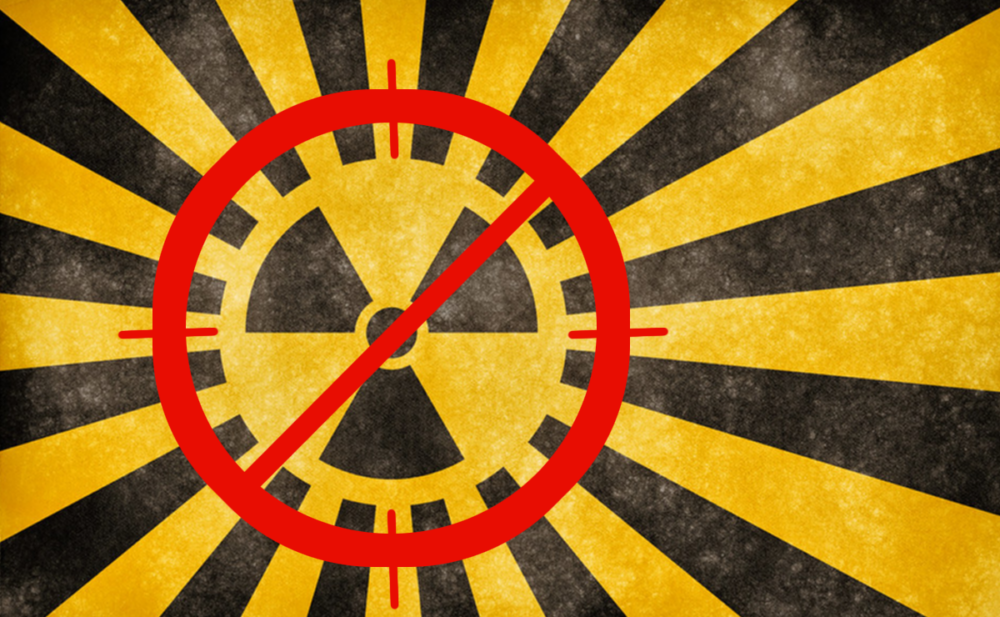
Andrea Berger
Senior Research Associate, The James Martin Center for Nonproliferation Studies
About the image
It has been called everything from “the beginning of the end of nuclear weapons” and a “historic achievement,” to a “shotgun treaty” and an “ineffective” and “counterproductive” disarmament measure. 1 On September 20th, a controversial treaty prohibiting nuclear weapons opened for signature. This Treaty on the Prohibition of Nuclear Weapons, or, as some refer to it, Nuclear Weapons Ban Treaty, will enter into force 90 days after the 50th country’s ratification.
The Ban Treaty prohibits the development, testing, use, threat of use, production, manufacture, acquisition, possession, stationing, and stockpiling of nuclear weapons. These prohibitions go substantially beyond existing international treaties on nuclear weapons, such as the Comprehensive Nuclear Test Ban Treaty (CTBT) or the Nuclear Non-Proliferation Treaty (NPT). Whereas the CTBT only prohibits explosive nuclear testing, and the NPT indefinitely grandfathered in nuclear weapons possession by five countries (while committing them to work towards disarmament), the Ban Treaty imposes a universal and absolute prohibition on all members. Any nuclear possessor that signed onto the nuclear weapons ban would be obligated to disarm within a time-bound framework that will be agreed with a “competent international authority” (not yet specified) and the other states parties to the treaty. Furthermore, if one of the states that station U.S. nuclear weapons on its territory as part of NATO’s nuclear umbrella signed on (Belgium, the Netherlands, Germany, Italy, or Turkey), that state would be forced to “ensure the prompt removal of such weapons” and submit a report to the UN Secretary-General on its actions. 2 Reflecting the humanitarian impetus for the treaty, it also includes provisions committing states to offering victim assistance in the event of a nuclear attack or test affecting another state party.
However, the Ban Treaty’s ultimate practical implications are constrained by a stark participatory divide. None of the nuclear weapons possessors, or so-called “umbrella states,” support the treaty, meaning that they are not legally bound by its terms.
The treaty is the brainchild of a group of non-nuclear weapon states and civil society advocates, frustrated by the slow pace of global nuclear disarmament and the continued risk of nuclear conflict. Since 2010, this group has successfully pushed for the reframing of the debate on nuclear weapons to focus on their humanitarian impact and risk of use. The group concluded that in the absence of adequate disarmament progress, it was necessary to delegitimize nuclear deterrence policies and exert normative pressure on the countries who rely upon them. As long as nuclear weapons were not banned outright, these countries reasoned, they could continue to be viewed by the international community as acceptable instruments of security rather than threatening weapons of mass destruction. Other WMD, including biological and chemical weapons, had been banned altogether by the respective conventions decades before. In 2016, six countries drafted, and twenty-eight more co-sponsored, a resolution in the UN General Assembly mandating the commencement of negotiations on a legally binding prohibition.
Nuclear-armed states and their allies opposed the initiative from the outset. They argued that the movement completely ignored the security considerations that led certain countries to rely upon nuclear deterrence in the first place. Progress on disarmament may be slow – as current U.S.-Russia arms reduction efforts illustrate – but when progress is made, they argued, it is both meaningful and durable.
Some nuclear possessors went further, arguing that the initiative was not merely ineffective and unserious, but potentially damaging. The United States circulated a paper among NATO allies, suggesting that a ban treaty could have negative ramifications for alliance activities. 3 Other opponents contended that the ban risked distracting from or undermining key disarmament and nonproliferation treaties, such as the NPT and the CTBT, possibly even threatening their “viability.” 4
Nuclear-armed states and their allies, being in the minority, ultimately lost the numbers game. On October 27, 2016, the UN General Assembly’s First Committee adopted Resolution L.41, “Taking forward multilateral nuclear disarmament negotiations,” with 123 votes in favor, 38 against, and 16 abstentions.
In accordance with the resolution’s mandate, negotiations on the text of the treaty prohibiting nuclear weapons commenced in March 2017 under the presidency of Ambassador Elayne Whyte Gomez of Costa Rica. Countries who had opposed the movement in the United Nations maintained their stance and boycotted the talks. Proponents of the treaty expected this development, but were prepared to push ahead regardless. Critics argued that this exclusionary approach would effectively render any eventual treaty “useless.” 5 Proponents disagreed, arguing that the treaty would generate normative pressure on the hold-outs by helping to delegitimize nuclear weapons globally.
The drafters of Resolution L.41 specified that substantive decisions on the treaty’s text would be made by two-thirds majority vote. This was in keeping with their philosophy that the process should be “open to all, but blockable by none.” 6 Over 100 civil society organizations also attended the negotiations.
The bulk of the negotiations were completed in a mere three weeks. The final text of the treaty was adopted on July 7, 2017, with 122 votes in favor, one against, and one abstention (recall that most of the treaty’s major opponents did not participate in the conference or vote on the text). The sole “no” vote was cast by the Netherlands, who despite hosting American nuclear weapons on its soil was compelled by its parliament to participate in the negotiations. From day one, the Netherlands made it clear that it would be unable to support a treaty inconsistent with its NATO obligations. As the treaty sought to broadly delegitimize nuclear deterrence, and specifically prohibited stationing and deploying nuclear weapons, its dissenting vote surprised no one.
Singapore was the only country to abstain – it had requested language on the “transit” of nuclear weapons through national territories that had been rejected. 7 Before the vote, many feared that Sweden and Switzerland would also abstain; their capitals had persistent concerns that its formulation legally subordinated the NPT and the CTBT to the new ban. Both ultimately determined that the treaty was, on balance, worth supporting.
While only 50 ratifications are needed for the Ban Treaty to enter into force, the diplomats who negotiated the treaty lack the authority to make ratification decisions on behalf of their governments; in democracies, for example, it is the legislative branch that traditionally performs this role. Several countries that voted in favor of the treaty on July 7th – particularly those in the Middle East – are expected not to ratify it, and the United States is already actively pressuring others not to sign. 8
The treaty’s drafters hope it will usher in meaningful normative changes, pressuring the nuclear weapons possessors and umbrella states to disarm more quickly. Critics warn it may undermine nonproliferation and disarmament by creating a “competitor regime,” entangling nonproliferation institutions like the International Atomic Energy Agency or NPT review process in “sterile but contentious debates and disputes over disarmament policy, making it harder for them to do the job the international community needs them to do in preventing nuclear proliferation.” 9 Detractors also argue that the treaty will unwind years of progress in developing the safeguards regime, because it endorses what they see as a lowest-common-denominator system inadequate for confirming that states party are not engaging in the activities prohibited by the ban. Some also warn of ramifications for U.S. military alliances, if states interpret the ban as prohibiting security relations with countries that possess nuclear weapons. Whether the aforementioned positive or negative consequences will materialize remains to be seen. 10 The treaty’s practical and normative implications will only be discernible with time.
Sign up for our newsletter to get the latest on nuclear and biological threats.
